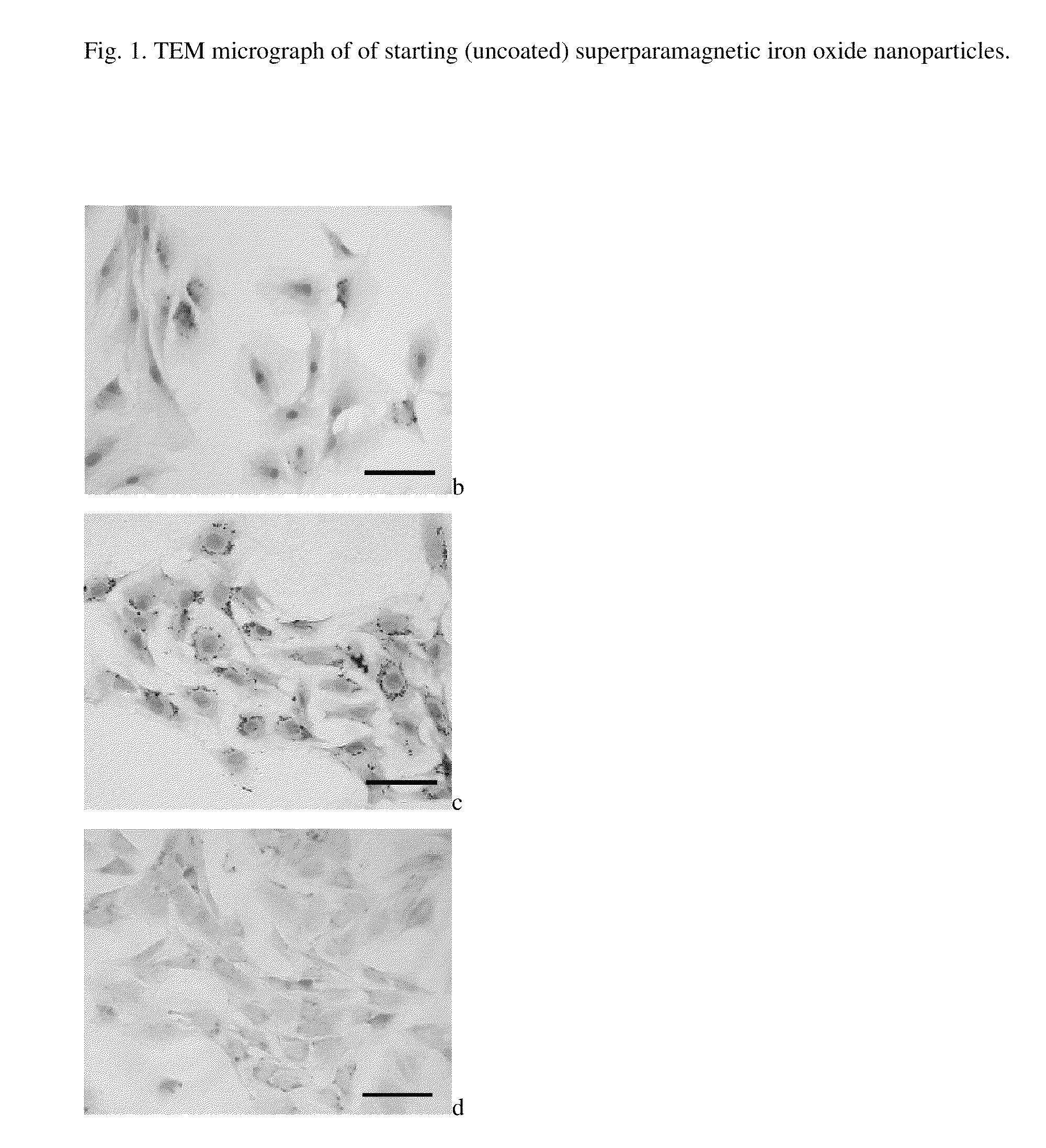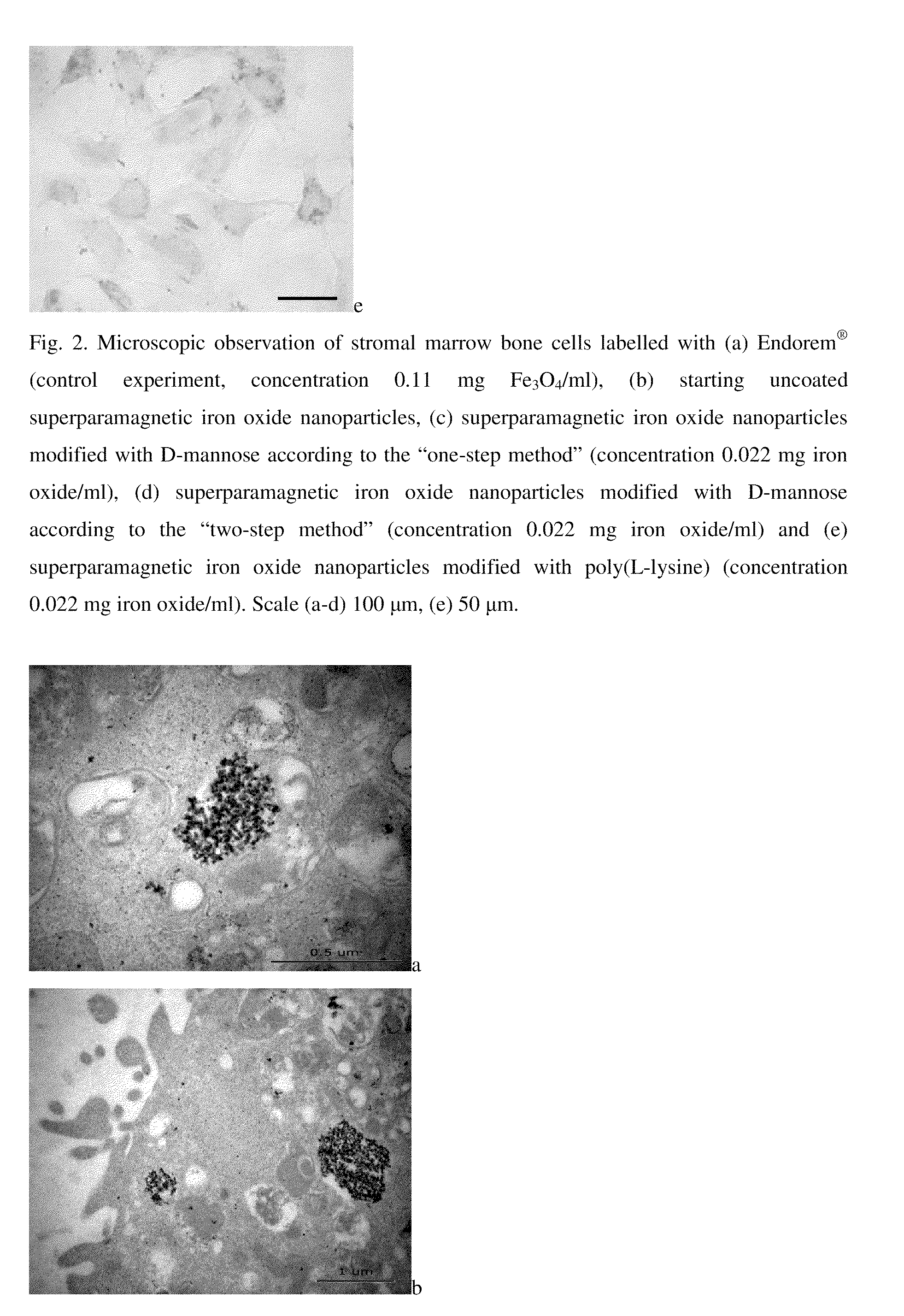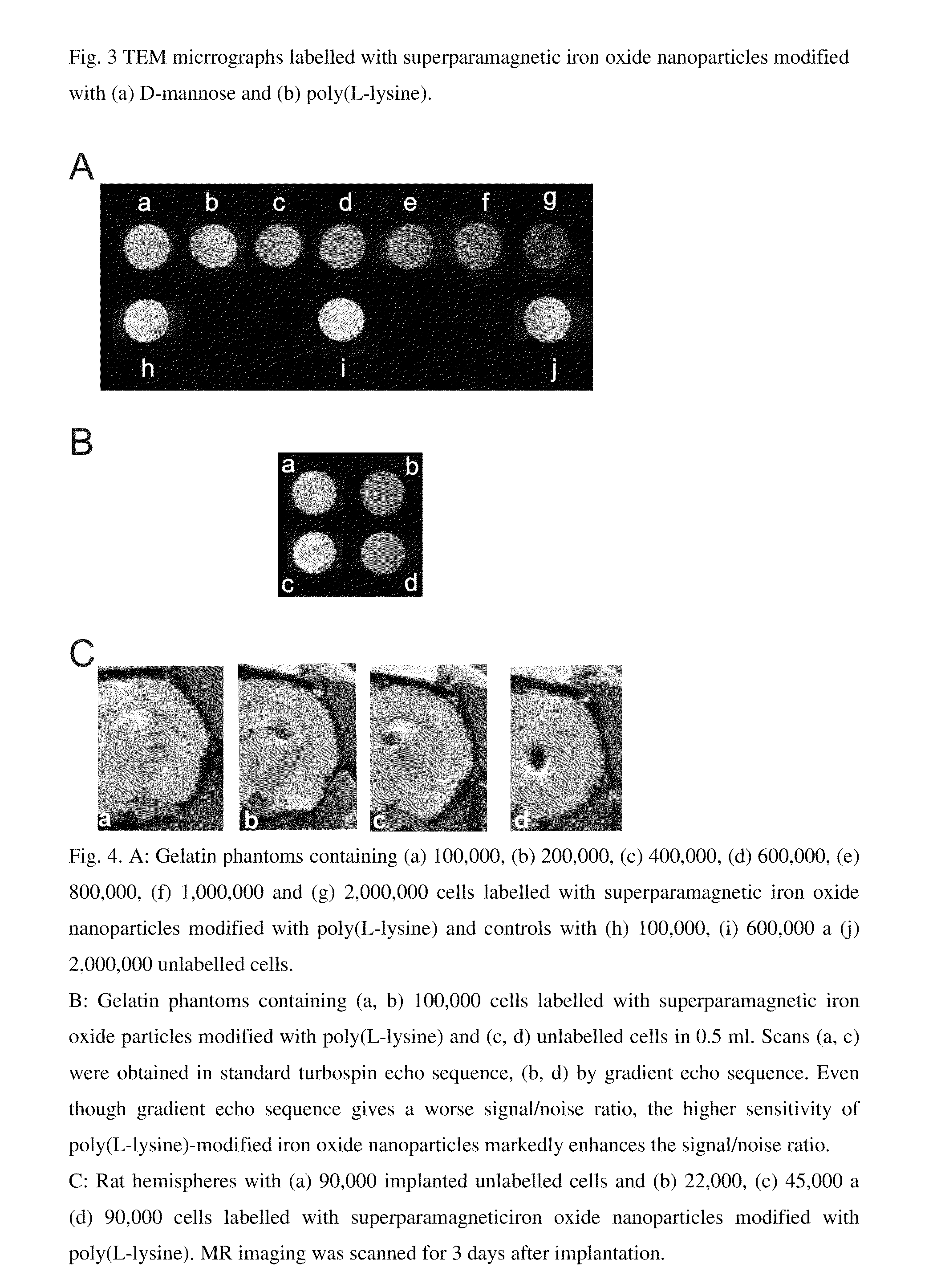Superparamagnetic Nanoparticles Based on Iron Oxides with Modified Surface, Method of Their Preparation and Application
a technology of superparamagnetic nanoparticles and iron oxides, applied in the direction of mixing methods, magnetic materials, electrical equipment, etc., can solve the problems of reducing magnetic susceptibility, colloid loss stability, changing the properties of air, etc., and achieve the effect of targeting superparamagnetic nanoparticle probes and less loading
- Summary
- Abstract
- Description
- Claims
- Application Information
AI Technical Summary
Benefits of technology
Problems solved by technology
Method used
Image
Examples
example 1
Preparation of Starting (Uncoated) Superparamagnetic Iron Oxide Nanoparticles
[0018]12 ml of aqueous 0.2M FeCl3 was mixed with 12 ml of aqueous 0.5M NH4OH under sonication (Sonicator W-385; Heat Systems-Ultrasonics, Inc., Farmingdale, N.Y., USA) at laboratory temperature for 2 min. Then 6 ml of aqueous 0.2M FeCl2 was added under sonication and the mixture was poured into 36 ml of aqueous 0.5M NH4OH. The resulting magnetite precipitate was left aging for 15 min, magnetically separated and repeatedly (7-10 times) washed with deionized water of resistivity 18 MΩ·cm−1 to remove all residual impurities (including NH4Cl). Finally, 1.5 ml of aqueous 0.1M sodium citrate was added under sonication and magnetite was oxidized by slow addition of 1 ml of 5% aqueous solution of sodium hypochlorite. The above procedure of repeated washing afforded the starting primary colloid.
[0019]For determination of the nanoparticle size, dynamic light scattering (DLS) was used, which gave the average hydrodyna...
example 2
Treatment of Superparamagnetic Iron Oxide Nanoparticles with Poly(Amino Acid)s—“Two-Step Synthesis”
[0020]To 10 ml of the starting colloid solution containing iron oxide nanoparticles prepared according to Example 1 and diluted to the concentration 2.2 mg iron oxide / ml, 0.01-2 ml (typically 0.2 ml) of aqueous solution of a poly(amino acid) of concentration 0.5-10 mg / ml (typically 1 mg / ml) was added dropwise under stirring and the mixture was sonicated for 5 min.
[0021]The poly(amino acid) can be polyalanine, polyglycine, polyglutamine, polyasparagine, polyarginine, polyhistidine or poly(L-lysine), aspartic and glutamic acid.
example 3
Treatment of Superparamagnetic Iron Oxide Nanoparticles with Saccharides—“Two-Step Synthesis”
[0022]Various volumes (0.1-5 ml) of 4 wt. % aqueous solution of a saccharide were added dropwise under stirring to 10 ml of the starting colloid solution containing iron oxide nanoparticles prepared according to Example 1, diluted to the concentration 2.2 mg iron oxide / ml and the mixture was sonicated for 5 min. The particles were repeatedly washed.
[0023]The saccharide can be D-arabinose, D-glucose, D-galactose, D-mannose, lactose, maltose, dextrans, dextrins.
PUM
| Property | Measurement | Unit |
|---|---|---|
| Temperature | aaaaa | aaaaa |
| Temperature | aaaaa | aaaaa |
| Temperature | aaaaa | aaaaa |
Abstract
Description
Claims
Application Information
 Login to View More
Login to View More - R&D
- Intellectual Property
- Life Sciences
- Materials
- Tech Scout
- Unparalleled Data Quality
- Higher Quality Content
- 60% Fewer Hallucinations
Browse by: Latest US Patents, China's latest patents, Technical Efficacy Thesaurus, Application Domain, Technology Topic, Popular Technical Reports.
© 2025 PatSnap. All rights reserved.Legal|Privacy policy|Modern Slavery Act Transparency Statement|Sitemap|About US| Contact US: help@patsnap.com



